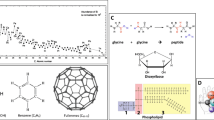Abstract
Low-molecular-weight dicarbonyls formed during free radical peroxidation of polyene lipids (malondialdehyde) and autooxidation (glyoxal) or other oxidative transformations of glucose (methylglyoxal) are able to modify the structure of lipid-protein supramolecular complexes of cells. We investigated changes in the erythrocyte membrane structure after an 18-h exposure of human red blood cells in the presence of various natural dicarbonyls. The changes in the mechanical properties of the membrane after membrane modification by carbonyls were evaluated by the susceptibility of erythrocytes to hypoosmotic hemolysis. It has been shown that treatment of red blood cells with malondialdehyde increases the resistance of these cells to hypoosmotic hemolysis, whereas the malondialdehyde isomer, methylglyoxal, in contrast, makes red blood cells more sensitive to the action of hypoosmotic solutions. Paradoxically, a homologue of malondialdehyde, glyoxal, has no effect on hemolysis of red blood cells in hypoosmotic solutions. The findings point to the possibility of the multidirectional effect of low-molecular-weight dicarbonyls with similar structures on the structure and function of biological membranes.
Similar content being viewed by others
References
V. Z. Lankin, A. K. Tikhaze, V. I. Kapel’ko, et al., Biochemistry (Moscow) 72 (10), 1081 (2007).
V. Z. Lankin, A. K. Tikhaze, G. G. Konovalova, et al., in Handbook of Lipoprotein Research, Ed. by J. E. Rathbound (NOVA Sci., New York, 2010), pp. 85–107.
V. Z. Lankin and A. K. Tikhaze, in Free radicals, nitricoxide, and inflammation: molecular, biochemical, and clinical aspects, Ed. by A. Tomasi, T. Özben, and V. P. Skulachev (IOS Press, NATO Science Series, Amsterdam etc., 2003), Vol. 344, pp. 218–231.
V. Z. Lankin, G. G. Konovalova, A. K. Tikhaze, et al., J. Diabetes 8 (3), 398 (2016).
E. M. Kumskova, O. A. Antonova, S. A. Balashov, et al., Mol. Cell. Biochem. 396 (1–2), 79 (2014)
E. Beutler, W. Kuhl, and C. West, Blood 59 (6), 1141 (1982).
D. W. Allen, C. F. Burgoyne, J. D. Groat, et al., Blood, 64 (6),1263 (1984).
T. N. Subbotina, N. M. Titova, A. A. Savchenko, et al., Klin. Lab. Diagn. 20 (5), 33 (2004).
M. Allegra, C. Gentile, L. Tesoriere, and M. A. Livrea, J. Pineal Res. 32 (3), 187 (2002).
A. L. Tappel, in Free Radicals in Biology, Ed. by W. A. Pryor (Acadenic Press, New York, 1980), Vol. 4, pp. 1–47.
V. Z. Lankin, in Free Radicals, Nitric Oxide, and Inflammation: Molecular, Biochemical, and Clinical Aspects, Ed. by A. Tomasi, T. Ozben, and V. P. Skulachev (IOS Press, NATO Science Series, Amsterdam, 2003), Vol. 344, pp. 8–23.
T. Schewe, C. M. Rapoport, and H. Kuhn, Adv. Enzymol. Relat. Areas Mol. Biol. 58, 192 (1986).
V. Z. Lankin, Yu. G. Osis, and A. K. Tikhaze, Dokl. Biochem. Biophys. 351, 121 (1996).
V. Z. Lankin, Yu. G. Osis, and A. K. Tikhaze, Biochemistry (Moscow) 67 (5), 566 (2002).
A. B. Manodori and F. A. Kuypers, J. Lab. Clin. Med. 140 (3), 161 (2002).
J. P. Nicolay, J. Schneider, O. M. Niemoeller, et al., Cell. Physiol. Biochem. 18 (4–5), 223 (2006).
G. Caimi, A. Serra, A. Catania, et al., Microcirc. Endothelium Lymphatics. 6 (2–3), 149 (1990).
S. K. Jain, M. Palmer, and Y. Chen, Metabolism 48 (8), 957 (1999).
F. A. Kuypers and K. de Jong, Cell. Mol. Biol. 50 (2), 147 (2004).
M. J. Wilson, K. Richter-Lowney, and D. L. Daleke, Biochemistry 32 (42), 11302 (1993).
V. A. Fadok, D. L. Bratton, D. M. Rose, et al., Nature 405 (6782), 85 (2000).
P. M. Henson, D. L. Bratton, and V. A. Fadok, Nat. Rev. Mol. Cell. Biol. 2 (8), 627 (2001).
U. K. Messmer and J. Pfeilschifter, Bioessays 22 (10), 878 (2000).
F. E. Boas, L. Forman, and E. Beutler, Proc. Natl. Acad. Sci. U. S. A. 95 (6), 3077 (1998).
S. Eda and I. W. Sherman, Cell. Physiol. Biochem. 12 (5–6), 373 (2002).
A. Ravandi, A. Kuksis, and N. A. Shaikh, Arterioscler. Thrombos. Vascular Biol. 20 (2), 467 (2000).
V. Z. Lankin, O. I. Afanasieva, G. G. Konovalova, et al., Dokl. Biochem. Biophys. 441, 287 (2011).
T. J. Lyons and A. J. Jenkins, Curr. Opin. Lipidol. 8 (3), 174 (1997).
A. Gugliucci, T. Menini, and A. J. Stahl, Biochem. Mol. Biol. Int. 32 (1), 139 (1994).
V. Lankin, G. Konovalova, A. Tikhaze, et al., Mol. Cell. Biochem. 395 (1–2), 241 (2014).
J. V. Hunt, M. A. Bottoms, K. Clare, et al., Biochem J. 300 (1), 243 (1994).
V. Z. Lankin, A. K. Tikhaze, and E. M. Kumskova, Mol. Cell. Biochem. 365 (1–2), 93 (2012)
K. B. Shumaev, K. V. Gubkina, E. M. Kumskova, et al., Biochemistry (Moscow) 74 (4), 461 (2009).
Author information
Authors and Affiliations
Corresponding author
Additional information
Original Russian Text © V.Z. Lankin, E.M. Belova, A.K. Tikhaze, 2017, published in Biofizika, 2017, Vol. 62, No. 2, pp. 325–329.
Rights and permissions
About this article
Cite this article
Lankin, V.Z., Belova, E.M. & Tikhaze, A.K. Hypoosmotic hemolysis of erythrocytes by active carbonyl forms. BIOPHYSICS 62, 252–255 (2017). https://doi.org/10.1134/S0006350917020130
Received:
Published:
Issue Date:
DOI: https://doi.org/10.1134/S0006350917020130




